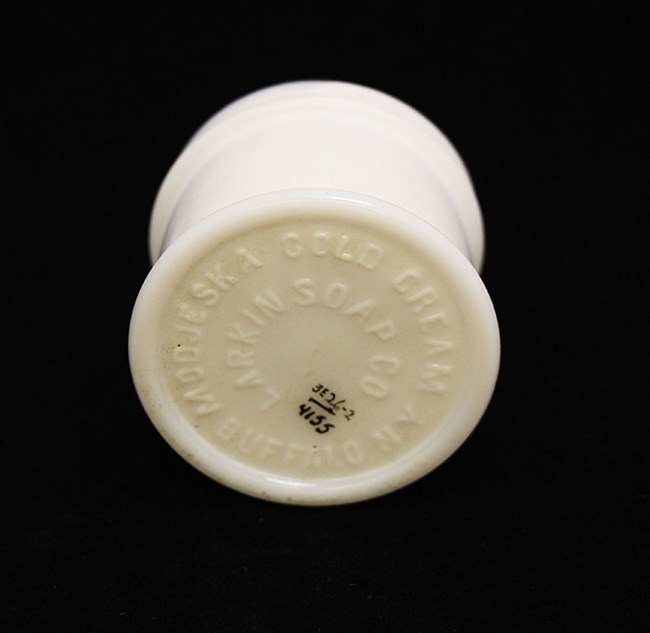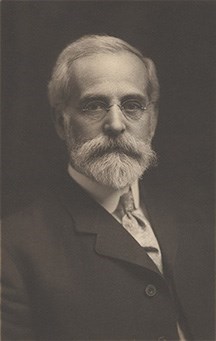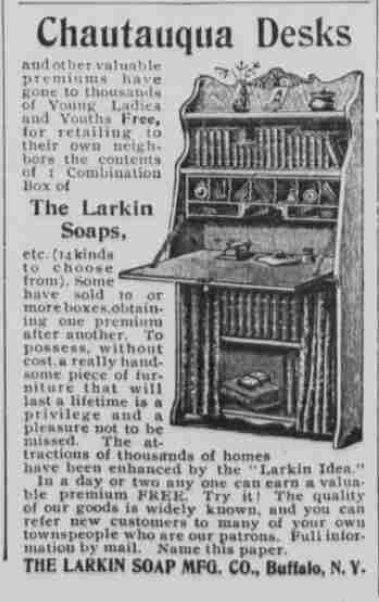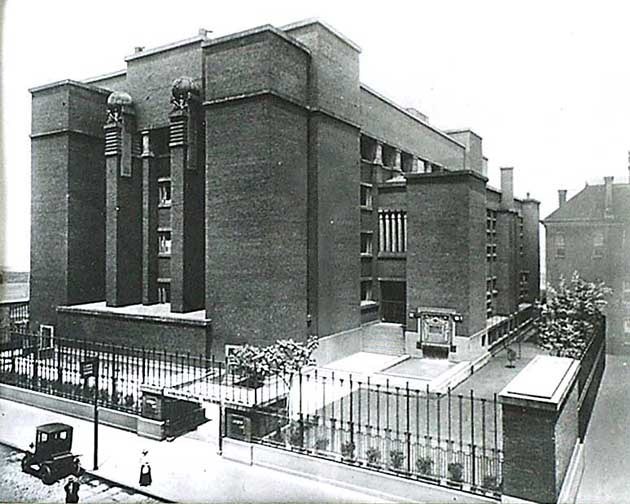Part of a series of articles titled Curious Collections of Fort Stanwix, The 19th & 20th Centuries.
Previous: Dr. Kilmer's Medicine Bottle
Article


NPS Photo
The story starts with the jar. The petite milk glass jar was found in a 19th century privy during 1970s archeological excavations in Rome, NY. It was made in a 3-piece mold sometime after 1870 and is missing its lid. Even without the lid, archeologists figured out what the now empty jar contained; the bottom revealed the words “MODJESKA COLD CREAM, BUFFALO, NY” and “LARKING SOAP CO.”
This little jar of cold cream, which once promised benefits including, “Soothing, Healing, Beautifies the Skin. Improves the Complexion. Cures Chapped Hands and Lips. A Perfect Emollient,” was part of a larger line of the Modjeska cosmetic products made by the Larkin Company beginning in 1886. They are named for Helena Modjeska, a Shakespearean actress who performed in New York. The Larkin Company’s founder, John Larkin, attended one of her performances and was so taken with her that he named a line of products for her (a bit different from the celebrity endorsement deals of today).
But how and why did this jar end up in Rome, NY?
Is it simple geography due to the somewhat close proximity of Rome to Buffalo?
Or was the Roman who purchased the cold cream part of a bigger retail reality?

Public Domain Open Source
John D. Larkin was born in Buffalo in the 1840s and spent his twenties working for the food producer J. Weller and Co. while taking business and bookkeeping courses. It was at the age of 30 when he started J. D. Larkin, Manufacturer of Plain and Fancy Soaps, which became Larkin Soap Company or the Larkin Company.
Larkin’s company was small at first, with John’s brother-in-law, Elbert Hubbard hired as the first salesman. Growth was quick and the product line grew from just one soap, Sweet Home Soap, to nine soaps in just five years. It was in the 1880s that the company started shifting their business practices in a way that would change consumer shopping forever, in what would be known as “The Larkin Idea."

Image from the Middlebury Register, Dec 11, 1896.
Under Hubbard’s recommendation, the company started offering “premiums” with soap purchases. Premiums are more familiarly known today as “gift with purchase,” where the customer would earn the premium by spending a certain amount of money. At the same time, the Larkin Company shifted from direct sales to catalog sales, embracing the philosophy, “From Factory to Family,” and effectively eliminating all Larkin Company salesmen by 1885. By selling directly to consumers with catalogs the company saved money, which gave them the opportunity to offer even better premiums.
The premiums started as collectible postcards and handkerchiefs, but then grew to include piano lamps, dining room chairs, and the very popular “Chautauqua Desk,” an oak drop front style desk. For $10 a customer would receive a variety pack of soaps, advertised as, “enough to last the average family one full year” and a get piece of furniture as a free gift. Buy soap and receive a substantial piece of furniture … for free!
Larkin Company relied on outside suppliers for the premiums, including Oneida Limited from Oneida, NY, who provided silver plated spoons as a premium. However, to keep up with demands and increase profits, Larkin also started manufacturing some of the premiums themselves. So, in addition to soap, the company also manufactured furniture and pottery. And, because we can’t resist the interesting twists and local history in this story, here’s a side note: The pottery side of Larkin Company was called Buffalo Pottery, and then later named Buffalo China in the 1940s. Buffalo China was eventually bought by Oneida Limited in 1983!
As the business continued to grow, Elbert Hubbard, brother-in-law and premium pioneer, decided to leave the company in the 1890s to pursue other interests. In 1895 he helped found the renowned artists community known as Roycroft in East Aurora, NY. The Roycroft philosophy stated, “A belief in working with the head, hand and heart and mixing enough play with work so that every task is pleasurable and makes for health and happiness.” Hundreds were drawn to the community, which included, notably, William Wallace Denslow, the illustrator for the book The Wonderful Wizard of Oz, which was published in 1900 and written by L. Frank Baum of Chittenango, NY!

From the collection of Jerome Puma, Open Source Public Domain.
Elbert Hubbard was the first to die. After leaving Larkin in the 1890s, Hubbard had become a well-known writer and publisher. He published a magazine called The Philistine and in 1913 was convicted of one count of violating postal law for mailing the magazine that contained some content perceived as lewd and obscene. He was found guilty and denied a passport, which meant he could not leave the country. This prompted Hubbard to request a pardon, first from President Taft, and then from President Wilson. Hubbard convinced President Wilson’s secretary to interrupt a cabinet meeting so he could request his pardon, and it worked! Finally, in early 1915 Hubbard was able to obtain his passport. It was just a few months later in May of 1915 that Hubbard and his second wife were onboard the RMS Lusitania, off the coast of Ireland, when it was torpedoed by a German U-boat, killing almost 1,200 onboard including Elbert and his wife.
About a decade after Hubbard’s death, John Larkin died at 80 years old, and the robust company seemed to go with him. Despite his son’s efforts to continue to diversify and grow the company by starting a line of food products and gas stations, profits steadily declined. The Larkin Company was sold in the 1940s and officially shuttered in 1962.
That little white jar of cold cream, once it was emptied of its soothing and beautifying contents, was discarded into a privy. There it stayed for over 90 years until excavated by National Park Service archaeologists. It was washed, cataloged, and stored undisturbed for another 40 years … until now. The simple jar had us wondering “what is Larkin?” and led us through a history of manufacturing, retail, and early twentieth century consumerism. A history that is local and global, a history of deeply connected New York communities, of business innovations, artistic revolutions, and world changing events.
Research for this feature artifact relied on the Buffalo Architecture and History John D. Larkin website, the Arts & Crafts Society websites on Roycroft and Elbert Hubbard, and Howard R. Stanger’s article “From Factory to Family: The Creation of a Corporate Culture in the Larking Company of Buffalo, New York” in Business History Review Vol 74/3 (Autumn 2000), pg: 407-433.
Part of a series of articles titled Curious Collections of Fort Stanwix, The 19th & 20th Centuries.
Previous: Dr. Kilmer's Medicine Bottle
Last updated: October 6, 2022